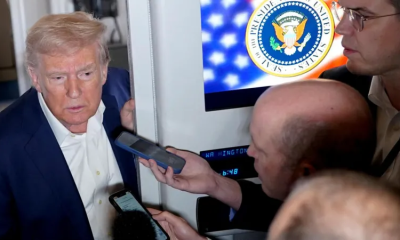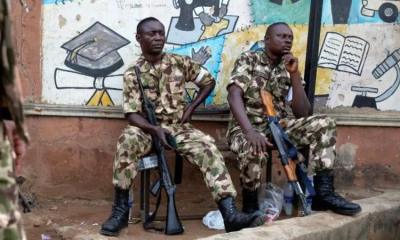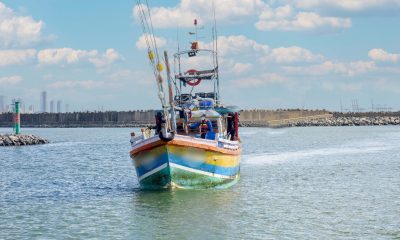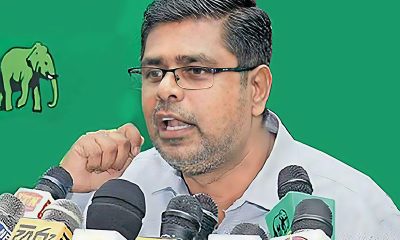Features
Nadungamuwe Raja, a prisoner of culture, an ambassador of culture or rather, an ambassador of conservation?

By Manasee Weerathunga
It is no doubt that the passing away of the ceremonial tusker Nadungamuwe Raja was sorrowful news to the entire country, regardless of religions and ethnicities. It is highly unlikely that there could have been any Sri Lankan who did not love this gentle giant for his majesty and tranquility. However, the question at which everyone who loved Nadungamuwe Raja becomes divided, is on whether Nadungamuwe Raja lived a life of grandeur or a life of suffering?
Nadungamuwe Raja is best known as the ceremonial tusker, bearing the main casket of the Tooth Relic of Lord Buddha in the annual procession of Esala, in Kandy, Sri Lanka. As in ancient traditions, it is only a male tusker of remarkable physique that is eligible for bearing the casket of the Tooth Relic. It is this majesty of this beast which prompted many Sri Lankans, especially the devout Buddhists, to place Nadungamuwe Raja, up on a pedestal of sanctitude. In the eyes of devout Buddhists, Nadungamuwe Raja was not only privileged enough to bear the casket of the Tooth Relic of Lord Buddha (something which is not approachable to a layman) but also was able to gather a plethora of merit in this lifetime, for the rest of Samsara, by being in service to the Lord Buddha. However, in the eyes of animal lovers and workers for animal rights, Nadungamuwe Raja was a prisoner of culture and blind religious devoutation, having had lived a life, chained in a domestic setting with no access to the natural habitat of an elephant or its co-inhabitants.
The opulent pair of long, intersecting pair of tusks can be named as the crowning glory of Nadungamuwe Raja, not to mention that he was the tallest domestic elephant known in whole Asia. In addition to these unmistaken resplendent features of Nadungamuwe Raja, the placidity of this beast’s nature, points out some facts noteworthy about elephants. Asian elephants, the species to which Nadungamuwe Raja belongs, differ from their African elephant cousins, with respect to several features. Firstly, Asian elephants are of significantly smaller build in comparison to African elephants, which makes the height of Nadungamuwe Raja, remarkable. Secondly, unlike the African elephant, which possesses tusks in both male and female alike, tusks are a rarity found in some male Asian elephants only, ticking off another box for Nadungamuwe Raja’s exceptionality. Thirdly, domesticated African elephants are unheard of because they do not share the serene demeanor of their Asian counterparts, while Nadungamuwe Raja is only one of the many domestic Asian elephants found in several countries of Asia.
However, domestication of animals is not something which is discrete for a region of the world. The history of animal domestication spans as far as the beginning of human civilization. The pre-historic man of Stone Age was in the habit of chasing and hunting the animals they wanted to fulfill their food requirements, and then moving to a new location once he had exploited all the animals in his surrounding location. However, as the humans moved on to the farming age by growing their food in their locality and forming permanent settlements, they realized that rather than going in search of animals to hunt, holding the animals in captivity, raring them and harvesting the milk, meat and hides that they needed was an easier option. That marked the beginning of animal domestication, resulting in some animal species, such as dogs, cats and ornamental fish breeds, to become fully domesticated species by the present times. A major step in this process involved identifying animals who were passive enough to be approached, caught, and held captive and tamed. This has resulted in the evolution of most domestic animal species to have traits that would make them better suited to a domestic setting while wiping out the traits which would help them survive in the wild. For example, evolution has taken away from the dogs, the traits of aggression shown by their distant relatives, the wolves, as well as any skills of surviving in the wild by hunting and avoiding predation. Therefore, if an enthusiast of animal rights is to argue that holding a gold fish in a fish tank is a violation of its rights and that it would be better off swimming freely in a stream, it is going to be one of the most frivolous points to make because a gold fish would hardly survive in a wild stream for more than 24 hours without getting predated. That is because the ancestors of these domestic animals, running back to hundreds of generations, have not even seen a wild environment so that their genes no longer contain the traits suited for the wild.
However, we cannot say the same about Asian elephants so confidently, because elephants still do exist in the wild and therefore is not a completely domesticated animal species. While the harsher environment that African elephants inhabit has made them more aggressive and violent by their genetic makeup, Asian elephants are more approachable which has enabled many countries to domesticate Asian elephants for centuries. Therefore, a fair number of domestic Asian elephants, found in many countries, are elephants who had been born and bred in domestic settings for generations. Hence, although many activists for animals rights have been voicing out in social media platforms that Nadungamuwe Raja lived a life of suffering by being chained in a domestic setting, having been an elephant born in a domestic elephant stable in India, it is uncertain what percentage of Nadungamuwe’s Raja’s genes still retained the traits that would help him survive in the wild. Usually, several generations of inbreeding of domesticated animals result in establishment of gene combinations best suited for domestic settings and purging those suited for wild environments. Still, it is uncertain how rapidly it happens in each species. With evolutionary biologists and behavioural scientists worldwide conducting a plethora of research on the question of whether nature or nurture determines the behavioural traits of an animal, the question of whether Nadungamuwe Raja would have been happier roaming freely in the wild remains an open question, with not enough data on how much of wild traits that he retained in his genes.
Nevertheless, if we were to assume that Nadungamuwe Raja was still biologically fully capable of living in a wild environment, we should not forget that he would be living in an environment where the humans have become a major predator for elephants. Evolution being a very slow process that takes millions of years, usually the genetic makeup that currently exists in many organisms is the genetic combination that evolved to suit the environmental conditions that existed thousands of years ago. The genome of many organisms is still undergoing the process of adapting to the current environment, which has changed rapidly from what it was a few hundreds of years back. Therefore, organisms do not evolve adaptations to match the changing environmental conditions as rapidly as the environment changes. The same is true for elephants because their genetic makeup has not evolved to keep up with the rapidly changing environment and hence, lack the adaptations to survive the threats posed by their greatest predator of the current world, the human. Therefore, it is fairly agreeable if someone says that Nadungamuwe Raja could have been poached long ago for his magnificent pair of tusks or could have been killed by ‘hakka patas’ traps if it had not lived in the seclusion of a domestic environment. However, it should be noted that Nadungamuwe Raja lived the average lifespan of an Asian elephant. The most common natural cause of death for wild elephants is a mechanical cause resulting from the loss of teeth. Elephants usually have four sets of teeth during their course of life and once the last set of teeth is lost, elephants die a slow and painful death due to the inability to feed and nourish themselves. It is noteworthy that the owners of Nadungamuwe Raja took the utmost effort to preserve the last set of teeth of the elephant so that his lifespan could be prolonged, by meticulously managing the elephant’s diet and behaviour. However, whether living in a natural environment and choosing his own diet from natural sources could have prolonged the lifespan of the elephant is contentious.
The increasing rarity of tusks as sumptuous as Nadungamuwe Raja’s in Asian elephants itself signals an evolutionary trend of elephants towards adaptation to the hostility created in wild environments by humans. It is the general trend of evolution to get rid of any traits that would pose a threat to the survival and fitness of any organism. By evolution, tusks serve the purpose of attracting female mates to male elephants, while helping males with combat with other males for territory and mates as well as obtaining food. With humans as a predator of elephants in wild environments, tusks have unfortunately become the worst nightmare for the survival of elephants in the wild. It is highly probable that the tusks of Nadungamuwe Raja could have brought the same unfortunate fate on him if he had lived in the wild. Even with living a domesticated life, the tusks of Nadungamuwe Raja had been too heavy for his head to bear towards the latter part of his life, although the situation had been ameliorated by his owners by arranging a sleeping place for the elephant where he could rest his head above his body. However, it is doubtful whether the tusks of Nadungamuwe Raja would have grown to that length and weight if it had lived in the wild. If a wild elephant had tusks as long and big as that, it goes without saying that it would pose a hinderance and a danger to the movement of the animal in dense vegetation, which are the common habitats of Asian elephants. Therefore, wild elephants have the habit of wearing off their tusks by rubbing them against tree branches, while the tusks of wild elephants are subjected to breakage during combats between males. For example, Gemunu, who is a well-known tusker inhabiting the Yala National Park of Sri Lanka, had only one tusk until recently, with the other being broken off during a dual. The remaining tusk was also broken off a couple of years earlier, during a dual with Nandimitra, another male elephant of the Yala National Park. Usually, once a male elephant loses his tusks in a combat, it either dies of the wounds of the combat or lives a quiet and short life restricted of mates or food of the territory, without the advantage of tusks. Therefore, another open question remains of whether Nadungamuwe Raja would have had such a luxurious pair of tusks until the end of his lifetime, had he lived in a wild environment.
Considering all these whether Nadungamuwe Raja was a prisoner of culture or not remains a question to be answered based on each person’s own morals and judgment. But, while dividing into sides and splitting hairs to prove whether Nadungamuwe Raja lived a life of a prisoner or that of royalty, there is a fact that many forget. While limiting the discussions about Nadungamuwe Raja to decorating him as an icon of Sri Lankan culture or fighting for his rights for a free life, we forget that not only Nadungamuwe Raja but all other domestic elephants of Sri Lanka which are treated with high esteem can serve a bigger role as ambassadors of environmental conservation. Nadungamuwe Raja and all other celebrated domestic elephants of Sri Lanka such as Kataragama Wasana, Indi Raja, Miyan Raja etc. fit perfectly well to the category of Flagship Species. The concept of Flagship Species introduced by the International Union for Conservation of Nature (IUCN) includes organisms having an aesthetic importance while representing a certain habitat, issue, or environmental cause. The objective of this concept is by conserving and drawing public attention to these animals which are of aesthetic attraction, the entire habitat they represent will be conserved and the environmental issue that they are involved in would be resolved. The giant panda endemic to China is an ideal example of a flagship species being a successful ambassador in resolving a conservation issue. With the giant panda being categorized as an endangered species by the IUCN in the 1980s, a massive campaign was launched to save China’s beloved national icon. This involved not only in-situ conservation efforts such as setting up nature reserve areas habitable for pandas, but also numerous ex-situ conservation techniques such as breeding pandas in captivity and propagating public interest and awareness on these cute creatures with the use of domesticated pandas held in captivity. These pandas did their job as environmental ambassadors so perfectly that by 2016, IUCN declared that giant pandas are no longer endangered but just vulnerable.
Right now, the number of Sri Lankans who worship Nadungamuwe Raja, holding him at a highly revered position is countless. Similarly, the number of Sri Lankans who fight for animal rights pointing out that Nadungamuwe Raja spent a torturous, miserable life is also fairly high. Amidst all that clamour, the number of elephants killed each year by poachers or by ‘hakka patas’ traps, the number of elephants shot by villagers for encroaching into cultivated lands, the number elephants hit by trains, plus the number of human lives lost each year by wild elephant attacks remain escalating. This disturbing trend signals to us that right now the most serious issue regarding elephants in Sri Lanka is not the debate of whether domestic elephants are cultural icons or prisoners of culture, but the human-elephant conflict which has gone unresolved, yet escalating to an extremely unfortunate level, for the past years. Wild elephants cannot be blamed for the circumstances considering the plight they are in with the construction of motorways fragmenting natural habitats of elephants and blocking their passes, human encroachment into natural habitats limiting the availability of food, water and space for the elephants plus poaching for ivory. On the other hand, the retaliation by humans to wild elephants is also fair considering the threat to property and lives it poses and the economic and emotional turmoil it costs when living in an area of wild elephant threat. That is why Nadungamuwe Raja and his fellow domestic elephants, should be viewed as ambassadors of environmental conservation rather than either icons or prisoners of culture. While thousands of people have been coming to pay their last respects to Nadungamuwe Raja with heavy hearts, while the authorities are taking steps to preserve Nadungamuwe Raja as a national treasure, while Nadungamuwe Raja’s predecessor tusker Raja has a museum dedicated all to himself and preserved and displayed as a national treasure, and while animal rights activists are launching heated social media campaigns to free the domestic elephants from their chains, there are numerous elephants in the island who portray major conservation issues. The wild elephant Natta Kota who roams the premises of tourist hotels bordering the Yala national park, has become a scavenger on garbage of the hotels which lure him to be a tourist attraction. The elephants inhabiting the forests bordering motorways of areas such as Habarana and Buttala had fallen to the plight of mafia gangsters who don’t let vehicles pass unless they are given the ransom of food. The elephants scavenging on garbage dumps of Tissamaharama have fallen to the plight of homeless beggars, picking through trash to fill their stomachs.
It goes without saying that Nadungamuwe Raja is a national treasure because a tusker of that stature and physique is indeed an asset to any country’s natural resource chest. But the reverence shown towards this animal needs to be extended to countless other elephants in Sri Lanka who are at the risk of getting poached for ivory, or killed by traps. As good as it is that Nadungamuwe Raja’s body be preserved as a national treasure as that of Raja, by housing it in a museum as a mere icon of cultural importance, the natural homes of the wild elephants of Sri Lanka needs to be preserved as well, as elephants are assets of Sri Lanka. The activists and enthusiasts of animal rights who voice out protests on the chained life that Nadungamuwe Raja led, should extend their fighting towards winning freedom for the numerous unnamed wild elephants who cannot roam wherever they wish in their native habitats and eat as much natural food as they like. Therefore, it is high time that the authorities start hailing Nandungamuwe Raja as an icon of conservational importance, rather than as a mere national treasure of cultural importance while the worshippers of Nandungamuwe Raja and the fighters for Nandungamuwe Raja’s animal rights start portraying him as an ambassador of environmental conservation rather than an ambassador of culture or a prisoner of culture.
(The writer is a PhD Student in Evolutionary Biology, University of Florida, Gainesville, US. She thanks Gihan Athapaththu, former Naturalist at Jetwing Yala, currently Master’s student at Jeju National University, South Korea, for his contribution to this article.)
Features
Minds and Memories picturing 65 years of Sri Lankan Politics and Society
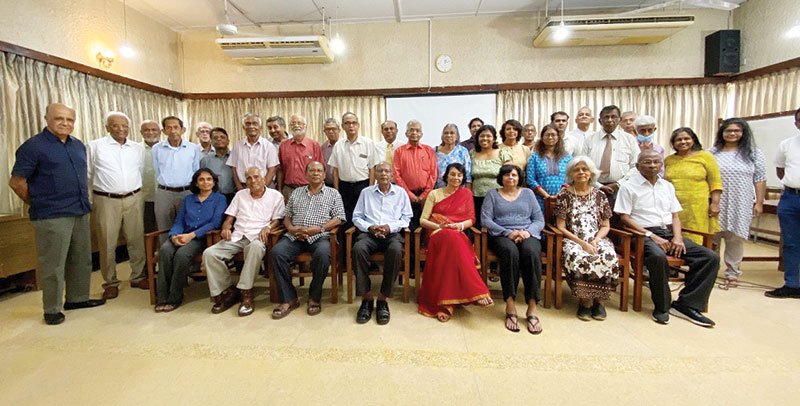
Last week I made mention of a gathering in Colombo to remember Kumar David, who passed away last October, as Comrade, Professor and Friend. The event was held on Saturday, April 5th, a day of double significance, first as the anniversary of the JVP insurrection on 5th April 1971, and now the occasion of the official welcome extended to visiting Indian Prime Narendra Modi by the still new JVP-NPP government. The venue was the Ecumenical Institute for Study and Dialogue (EISD) on Havelock Road, which has long been a forum for dialogues and discussions of topics ranging from religious ecumenism, Liberation Theology and Marxist politics. Those who gathered to remember Kumar were also drawn from many overlapping social, academic, professional and political circles that intersected Kumar’s life and work at multiple points. Temporally and collectively, the gathering spanned over six decades in the evolution of post-independence Sri Lanka – its politics, society and the economy.
Several spoke and recalled memories, and their contributions covered from what many of us have experienced as Sri Lankans from the early 1960s to the first two and a half decades of the 21st century. The task of moderating the discussion fell to Prof. Vijaya Kumar, Emeritus Professor of Chemistry at Peradeniya, who was a longtime friend of Kumar David at the university and a political comrade in the LSSP – especially in the Party’s educational and publication activities.
Vijaya Kumar recalled Kumar David’s contributions not only to Marxist politics but also to the popularization of Science that became a feature in several of KD’s weekly contributions to the Sunday Island and the Colombo Telegraph. Marshal Fernando, former and longtime Director of the EISD welcomed the participants and spoke of Kumar David’s many interactions with the Institute and his unflinching offer of support and advice to its activities. EISD’s current Director, Fr. Jayanath Panditharatne and his staff were extremely helpful.
Rohini David, Kumar’s wife of over 50 years, flew in specially for the occasion from Los Angeles and spoke glowingly of Kumar’s personal life as a husband and a father, and of his generosity for causes that he was committed to, not only political, but also, and more importantly, educational. An interesting nugget revealed by Rohini is the little known fact that Kumar David was actually baptized twice – possibly as a Roman Catholic on his father’s side, and as an Anglican on his mother’s side. Yet he grew to see an altogether different light in all of his adult life. Kumar’s father was Magistrate BGS David, and his maternal grandfather was a District Judge, James Joseph.
Kumar had an early introduction to politics as a result of his exposure to some of the political preparations for the Great Hartal of 1953. Kumar was 12 years old then, and the conduit was his step-father, Lloyd de Silva an LSSPer who was close to the Party’s frontline leaders. From a very young age, Kumar became familiar with all the leaders and intellectuals of the LSSP. Lloyd was known for his sharp wit and cutting polemics. One of my favourite lines is his characterization of Bala Tampoe as a “Lone Ranger in the Mass Movement.” Lloyd’s polemics may have rubbed on Kumar’s impressionable mind, but the more enduring effect came from Lloyd’s good collection of Marxist books that Kumar self-admittedly devoured as much as he could as a teenager and an undergraduate.
Electric Power and Politics
Early accounts of Kumar’s public persona came from Chris Ratnayake, Prof. Sivasegaram and Dr. K. Vigneswaran, all Kumar’s contemporaries at the Engineering Faculty that was then located in Colombo. From their university days in the early 1960s, until now, they have witnessed, been a part of and made their own contributions to politics and society in Sri Lanka. Chris, a former CEB and World Bank Electrical Engineer, was part of the Trotskyite LSSP nucleus in the Engineering Faculty, along with Bernard Wijedoru, Kumar David, Sivaguru Ganesan, MWW Dharmawardana, Wickramabahu Karunaratne and Chris Rodrigo. Of that group only Chris and MWW are alive now.
Chris gave an accurate outline of their political involvement as students, Kumar’s academic brilliance and his later roles as a Lecturer and Director of the CEB under the United Front Government. Chris also described Kumar’s later academic interest and professional expertise in the unbundling of power systems and opening them to the market. Even though he was a Marxist, or may be because of it, Kumar had a good understanding of the operation of the market forces in the electricity sector.
Chris also dealt at length on Sri Lanka’s divergent economic trajectories before and after 1977, and the current aftermath of the recent economic crisis. As someone who has worked with the World Bank in 81 countries and has had the experience of IMF bailout programs, Chris had both warning and advice in light of Sri Lanka’s current situation. No country, he said, has embarked on an economic growth trajectory by following standard IMF prescriptions, and he pointed out that countries like the Asian Tigers have prospered not by following the IMF programs but by charting their own pathways.
Prof. S. Sivasegaram and Dr. K. Vigneswaran graduated in 1964, one year after Kumar David, with first classes in Mechanical Engineering and Civil Engineering, respectively. Sivasegaram joined the academia like Kumar David, while Vigneswaran joined the Irrigation Department but was later drawn into the vortex of Tamil politics where he has been a voice of reason and a source for constructive alternatives. As Engineering students, they were both Federal Party supporters and were not aligned with Kumar’s left politics.
It was later at London Imperial College, Sivasegaram said, he got interested in Marxism and he credited Kumar as one of the people who introduced him to Marxism and to anti-Vietnam protests. But Kumar could not persuade Sivasegaram to be a Trotskyite. Sivasegaram has been a Maoist in politics and apart from his Engineering, he is also an accomplished poet in Tamil. Vigneswaran recalled Kumar’s political involvement as a Marxist in support of the right of self-determination of the Tamils and his accessibility to Tamil groups who were looking for support from the political left.
K. Ramathas and Lal Chandranath were students of Kumar David at Peradeniya, and both went on to become established professionals in the IT sector. Ramathas passionately recalled Kumar’s effectiveness as a teacher and described his personal debt of gratitude for helping him to get a lasting understanding of the concept and application of power system stability. This understanding has helped him deal with other systems, said Ramathas, even as he bemoaned the lack of understanding of system stability among young Engineers and their failure to properly explain and address recurrent power failures in Sri Lanka.
Left Politics without Power
The transition from Engineering to politics in the discussion was seamlessly handled by veterans of left politics, viz., Siritunga Jayasuriya, Piyal Rajakaruna and Dishan Dharmasena, and by Prof. Nirmal Dewasiri of the History Department at the University of Colombo. Siritunga, Piyal and Dishan spoke to the personal, intellectual and organizational aspects of Kumar David in the development of left politics after Kumar David, Vasudeva Nanayakkara and Bahu were no longer associated with the LSSP. Dewasiri reflected on the role of the intellectuals in left political parties and the lost to the left movement as a whole arising from the resignation or expulsion of intellectuals from left political organizations.
While Kumar David’s academic and professional pre-occupation was electric power, pursuing power for the sake of power was not the essence of his politics. That has been the case with Bahu and Sivasegaram as well. They naturally had a teaching or educational role in politics, but they shared another dimension that is universally common to Left politics. Leszek Kolakowski, the Polish Marxist who later became the most celebrated Marxist renegade, has opined that insofar as leftists are generally ahead of their times in advocating fundamental social change and promoting ideas that do not resonate with much of the population, they are unlikely to win power through electoral means.
Yet opposition politics predicated on exposing and decrying everything that is wrong with the system and projecting to change the system is fundamentally the most moral position that one can take in politics. So much so it is worth pursuing even without the prospect of power, as Hector Abhayavardhana wrote in his obituaries for LSSP leaders like NM Perera and Colvin R de Silva. By that token, the coalition politics of the 1960s could be seen as privileging a shared parliamentary path to power while dismissing as doctrinaire the insistence on a sole revolutionary path to power.
The two perspectives clashed head on and splintered the LSSP at its historic 1964 Conference. Kumar David and Lal Wijenayake were the youngest members at that conference, and the political genesis of Kumar David and others at the Engineering faculty that Chris Ratnayake outlined was essentially post-coalition politics. In later years, Vasudeva Nanayakkara, Bahu and Kumar David set about creating a left-opposition (Vama) tendency within the LSSP.
This was considered a superior alternative to breaking away from the Party that had been the experience of 1964. Kumar David may have instinctively appreciated the primacy of the overall system stability even if individual components were getting to be unstable! But their internal efforts were stalled, and they were systematically expelled from the Party one by one. Kumar David recounted these developments in the obituary he wrote for Bahu.
As I wrote last week, after 1977 and with the presidential system in place, the hitherto left political parties and organizations generally allied themselves with one or the other of the three main political alliances led by the SLFP, the SLPP and even the UNP. A cluster of them gravitated to the NPP that has been set up by the JVP under the leadership of Anura Kumara Dissanayake. Kumar David supported the new JVP/NPP initiative and was optimistic about its prospects. He wrote positively about them in his weekly columns in the Sunday Island and the Colombo Telegraph.
The Social Circles of Politics
Sometime in late 2006, Rohan Edrisinha introduced Kumar and me to Rajpal Abeynayake, who was then the Editor of the Sunday Observer, for the purpose of writing weekly columns for the Paper. Bahu was already writing for the Sunday Observer and for almost an year, Bahu, Kumar and I were Sunday Island columnists, courtesy of Rajpal Abeynayake. In 2007, Prof. Vijaya Kumar introduced us to Manik de Silva, already the doyen of Sri Lanka’s English medium editors, and Kumar and I started writing for the Sunday Island edited by Manik. It has been non-stop weekly writing a full 18 years. For a number of years, we have also been publishing modified versions of our articles in the Colombo Telegraph, the online journal edited by the inimitable Uvindu Kurukulasuriya.
Writing mainstream rekindled old friendships and created new ones. It was gratifying to see many of them show up at the celebration of life for Kumar. That included Rajpal Abeynayake, Bunchy Rahuman, Gamini Kulatunga, Ranjith Galappatti, Tissa Jayatilaka, NG (Tanky) Wickremeratne, and Manik de Silva. Vijaya Chandrasoma, who unfortunately could not attend the meeting, was particularly supportive of the event along with Tanky and Ramathas. Tissa and Manik spoke at the event and shared their memories of Kumar.
Dr. Santhushya Fernando of the Colombo Medical Faculty provided organizational support and created two superb video montages of Kumar’s life in pictures to background theme songs by Nat King Cole and Frank Sinatra. Manoj Rathnayake produced a Video Recording of the event.
In a quirky coincidence, five of those who attended the event, viz. Manik de Silva, Vijaya Kumar, Chris Ratnayake, S. Sivasegaram and K. Vigneswaran were all classmates at Royal College. On a personal note, I have been associated with every one of them in one way or another. Chris and I were also Engineers at the Hantana Housing Development in the early 1980s, for which the late Suren Wickremesinghe and his wife Tanya were the Architects. And Suren was in the same Royal College class as the other five mentioned here.
In the last article he wrote before his passing, Kumar David congratulated Anura Kumara Dissanayake for his magnificent political achievement and expressed cautious optimism for the prospects under an NPP government. Many in the new government followed Kumar David’s articles and opinions and were keen to participate in the celebration of life that was organized for him. That was not going to be possible anyway with the visit of Prime Minister Modi falling on the same day. Even so, Prof. Sunil Servi, Minister of Buddha Sasana, and Religious and Cultural Affairs, was graciously present at the event and expressed his appreciation of Kumar David’s contributions to Sri Lankan politics and society.
by Rajan Philips
Features
53 Years of HARTI- Looking Back and Looking Ahead
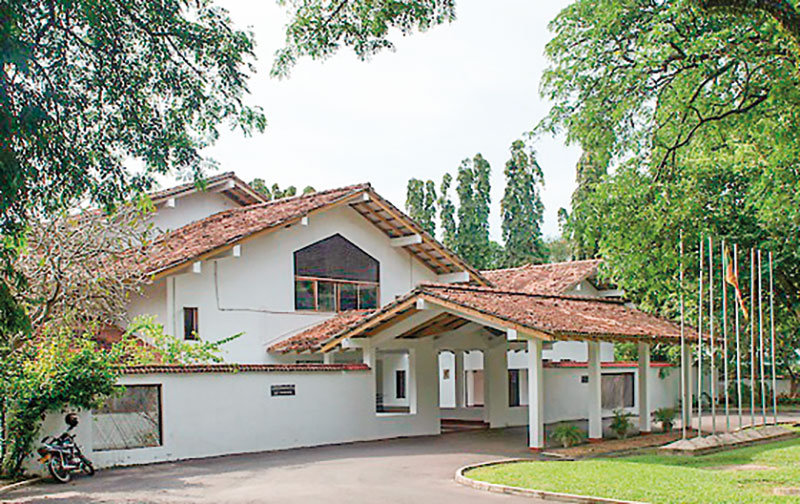
C. Narayanasuwami, the first Director of the then Agrarian Research and Training Institute (ARTI).
I am delighted to be associated with the fifty third anniversary celebrations of HARTI. I cherish pleasant memories of the relentless efforts made as the First Director to establish, incorporate, develop, direct, and manage a nascent institute in the 1970s amidst many challenges. The seven-year period as Director remains as the most formidable and rewarding period in my career as a development professional. I have been fortunate to have had a continuing relationship with HARTI over the last five decades. It is rarely that one who played a significant role in the establishment and growth of an institution gets an opportunity to maintain the links throughout his lifetime and provide messages on the completion of its fifth (I was still the director then), the 15th, 50th and 53rd anniversaries.
I had occasion also to acknowledge the contribution of the Institute on its 46th year when I released my book, ‘Managing Development: People, Policies and Institutions’ using HARTI auditorium and facilities, with the able support of the then director and staff who made the event memorable. The book contains a special chapter on HARTI.
On HARTI’s 15th anniversary I was called upon to offer some thoughts on the Institute’s future operations. The following were some of my observations then, “ARTI has graduated from its stage of infancy to adolescence….Looking back it gives me great satisfaction to observe the vast strides it has made in developing itself into a dynamic multidisciplinary research institution with a complement of qualified and trained staff. The significant progress achieved in new areas such as marketing and food policy, data processing, statistical consultancies, information dissemination and irrigation management, highlights the relevance and validity of the scope and objectives originally conceived and implemented”.
It may be prudent to review whether the recommendations contained in that message, specifically (a) the preparation of a catalogue of research findings accepted for implementation partially or fully during policy formulation, (b) the relevance and usefulness of information services and market research activities in enhancing farmer income, and (c) the extent to which the concept of interdisciplinary research- a judicious blend of socio-economic and technical research considered vital for problem-oriented studies- was applied to seek solutions to problems in the agricultural sector.
The thoughts expressed on the 15th anniversary also encompassed some significant management concerns, specifically, the need to study the institutional capabilities of implementing agencies, including the ‘human factor’ that influenced development, and a critical review of leadership patterns, management styles, motivational aspects, and behavioural and attitudinal factors that were considered vital to improve performance of agrarian enterprises.
A review of HARTI’s current operational processes confirm that farmer-based and policy-based studies are given greater attention, as for example, providing market information service for the benefit of producers, and undertaking credit, microfinance, and marketing studies to support policy changes.
The changes introduced over the years which modified the original discipline-based research units into more functional divisions such as agricultural policy and project evaluation division, environmental and water resources management division, and agricultural resource management division, clearly signified the growing importance attached to functional, action-oriented research in preference to the originally conceived narrowly focused discipline-based research activities.
HARTI has firmly established its place as a centre of excellence in socio-economic research and training with a mature staff base. It is pertinent at this juncture to determine whether the progress of HARTI’s operations was consistently and uniformly assessed as successful over the last five decades.
Anecdotal evidence and transient observations suggest that there were ups and downs in performance standards over the last couple of decades due to a variety of factors, not excluding political and administrative interventions, that downplayed the significance of socio-economic research. The success of HARTI’s operations, including the impact of policy-based studies, should be judged on the basis of improved legislation to establish a more structured socio-economic policy framework for agrarian development.
Looking Ahead
Fifty-three years in the life of an institution is substantial and significant enough to review, reflect and evaluate successes and shortcomings. Agrarian landscapes have changed over the last few decades and national and global trends in agriculture have seen radical transformation. Under these circumstances, such a review and reflection would provide the basis for improving organisational structures for agricultural institutions such as the Paddy Marketing Board, development of well-conceived food security plans, and above all, carefully orchestrated interventions to improve farmer income.
New opportunities have arisen consequent to the recent changes in the political horizon which further validates the role of HARTI. HARTI was born at a time when Land Reform and Agricultural Productivity were given pride of place in the development programs of the then government. The Paddy Lands Act provided for the emancipation of the farming community but recent events have proven that the implementation of the Paddy Lands Act has to be re-looked at in the context of agricultural marketing, agricultural productivity and income generation for the farming community.
Farmers have been at the mercy of millers and the price of paddy has been manipulated by an oligopoly of millers. This needs change and greater flexibility must be exercised to fix a guaranteed scale of prices that adjust to varying market situations, and provide adequate storage and milling facilities to ensure that there is no price manipulation. It is time that the Paddy Lands Act is amended to provide for greater flexibility in the provision of milling, storage and marketing services.
The need for restructuring small and medium scale enterprises (SMEs) recently announced by the government warrants greater inputs from HARTI to study the structure, institutional impediments and managerial constraints that inflict heavy damages leading to losses in profitability and organisational efficiency of SMEs.
Similarly, HARTI should look at the operational efficiency of the cooperative societies and assess the inputs required to make them more viable agrarian institutions at the rural level. A compact research exercise could unearth inefficiencies that require remedial intervention.
With heightened priority accorded to poverty alleviation and rural development by the current government, HARTI should be in the forefront to initiate case studies on a country wide platform, perhaps selecting areas on a zonal basis, to determine applicable modes of intervention that would help alleviate poverty.
The objective should be to work with implementing line agencies to identify structural and institutional weaknesses that hamper implementation of poverty reduction and rural development policies and programs.
The role played in disseminating marketing information has had considerable success in keeping the farming community informed of pricing structures. This should be further expanded to identify simple agricultural marketing practices that contribute to better pricing and income distribution.
HARTI should consider setting up a small management unit to provide inputs for management of small-scale agrarian enterprises, including the setting up of monitoring and evaluation programs, to regularly monitor and evaluate implementation performance and provide advisory support.
Research and training must get high level endorsement
to ensure that agrarian policies and programs constitute integral components of the agricultural development framework. This would necessitate a role for HARTI in central planning bodies to propose, consider and align research priorities in line with critical agricultural needs.
There is a felt need to establish links with universities and co-opt university staff to play a role in HARTI research and training activities-this was done during the initial seven-year period. These linkages would help HARTI to undertake evaluative studies jointly to assess impacts of agrarian/agricultural projects and disseminate lessons learned for improving the planning and execution of future projects in the different sectors.
In the overall analysis, the usefulness of HARTI remains in articulating that research and analysis are crucial to the success of implementation of agrarian policies and programs.
In conclusion, let us congratulate the architects and the dynamic management teams and staff that supported the remarkable growth of HARTI which today looks forward to injecting greater dynamism to build a robust institution that would gear itself to meeting the challenges of a new era of diversified and self-reliant agrarian society. As the first director of the Institute, it is my wish that it should grow from strength to strength to maintain its objectivity and produce evidence-based studies that would help toward better policies and implementation structures for rural transformation.
Features
Keynote Speech at the Launch of The Ceylon Journal, by Rohan Pethiyagoda
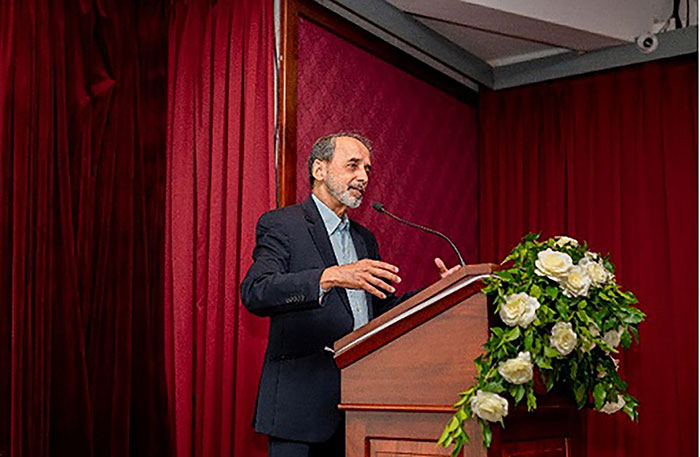
“How Rubber Shaped our Political Philosophy”
The Ceylon Journal was launched last August. Its first issue is already out of print. Only a handful of the second issue covering new perspectives of history, art, law, politics, folklore, and many other facets of Sri Lanka is available. To reserve your very own copy priced Rs. 2000 call on 0725830728.
Congratulations, Avishka [Senewiratne]. I am so proud of what you have done. Especially, Ladies and Gentlemen, to see and hear all of us stand up and actually sing the National Anthem was such a pleasure. Too often on occasions like this, the anthem is played, and no one sings. And we sang so beautifully this evening that it brought tears to my eyes. It is not often we get to think patriotic thoughts in Sri Lanka nowadays: this evening was a refreshing exception.
I’m never very sure what to say on an occasion like this, in which we celebrate history, especially given that I am a scientist and not a historian. It poses something of a challenge for me. Although we are often told that we must study history because it repeats itself, I don’t believe it ever does. But history certainly informs us: articles such as those in The Ceylon Journal, of which I read an advance copy, help us understand the context of our past and how it explains our present.
I want to take an example and explain what I am on about. I’m going to talk about rubber. Yes rubber, as in ‘eraser’, and how it crafted our national political identity, helping, even now seven decades later, to make ‘capitalism’ a pejorative.
As I think you know already, rubber came into general use in the middle of the 19th century. Charles Macintosh invented the raincoat in 1824 by placing a thin sheet of rubber between two sheets of fabric and pressing them together. That invention transformed many things, not least warfare. Just think of Napoleon’s invasion of Russia in the winter of 1812. His troops did that without any kind of waterproof clothing. Some 200,000 of them perished, not from bullets but from hypothermia. Waterproof raincoats could have saved thousands of lives. Not long after rubber came to be used for waterproofing, we saw the first undersea telegraph cable connecting Europe to North America being laid in the 1850s. When the American civil war broke out in 1860, demand for rubber increased yet further: the troops needed raincoats and other items made from this miracle material.
At that time rubber, used to be collected from the wild in the province of Pará in Northern Brazil, across which the Amazon drains into the Atlantic. In 1866, steamers began plying thousands of kilometres upriver, to return with cargoes of rubber harvested from the rainforest. Soon, the wild trees were being tapped to exhaustion and the sustainability of supply became doubtful.
Meanwhile, England was at the zenith of its colonial power, and colonial strategists thought rather like corporate strategists do today. The director of the Kew Gardens at the time, Joseph Hooker, felt there might be one day be a greater potential for rubber. He decided to look into the possibility of cultivating the rubber tree, Hevea brasiliensis, in Britain’s Asian colonies. So, he dispatched a young man called Henry Wickham to the Amazon to try to secure some seeds. In 1876, Wickham returned to Kew with 70,000 rubber seeds. These were planted out in hothouses in Kew and by the end of that year, almost 2000 of them had germinated.
These were dispatched to Ceylon, only a few weeks’ voyage away now, thanks to steamships and the Suez Canal. The director of the Peradeniya Botanic Garden at the time was George Henry Kendrick Thwaites, a brilliant systematic botanist and horticulturalist. Thwaites received the seedlings and had to decide where to plant them. He read the available literature—remember, this was 1876: there was no internet—and managed to piece together a model of the climatic conditions in the region of the Amazonian rainforest to which rubber was native. He decided that the plants would need an elevation of less than 300 metres and a minimum annual rainfall of at least 2000mm. In other words, the most suitable region for rubber would be an arc about 30 kilometres wide, extending roughly from Ambalangoda to Matale. Despite his never having seen a rubber plant until then, astonishingly, he got it exactly right.
Thwaites settled on a site in the middle of the arc, at Henarathgoda near Gampaha. That became the world’s first rubber nursery: the first successful cultivation of this tree outside Brazil. The trees grew well and, eight years later, came into seed. Henry Trimen, Thwaites’ successor, used the seeds to establish an experimental plantation near Polgahawela and also shared seeds with the Singapore Botanic Garden. Those would later become the foundation of the great Malaysian rubber industry.
But up to that time, Sri Lanka’s rubber plantation remained a solution looking for a problem. Then, in 1888, the problem arrived, and from a completely unexpected quarter: John Dunlop invented the pneumatic tire. Soon, bicycles came to be fitted with air-filled tires, followed by motorcars. In 1900, the US produced just 5,000 motorcars; by 1915, production had risen to half a million. The great rubber boom had begun.
Meanwhile, the colonial administration in Ceylon had invited investors to buy land and start cultivating rubber to feed the growing international demand. But by the early 1890s, three unusual things had happened. First, with the collapse of the coffee industry in the mid-1870s, many British investors had been bankrupted. Those who survived had to divert all their available capital into transitioning their failing coffee plantations into tea. They were understandably averse to risk. As a result, the British showed little interest in this strange tree called rubber that had been bought from Brazil.
Second, a native Sri Lankan middle class had by then emerged. The Colebrooke-Cameron reforms had led to the establishment of the Royal academy, later Royal College, by 1835. Other great schools followed in quick succession. From the middle of the 19th century, it was possible for Sri Lankans to get an education and get employment in government service, become professionals, doctors, lawyers, engineers, civil servants, clerks, and so on. And so, by the 1890s, a solid native middle class had emerged. The feature that defines a middle class, of course, is savings, and these savings now came to be translated into the capital that founded the rubber industry.
Third, the British had by then established a rail and road network and created the legal and commercial institutions for managing credit and doing business—institutions like banks, financial services, contract law and laws that regulated bankruptcy. They had made the rules, but by now, Sri Lankans had learned to play the game. And so, it came to be that Sri Lankans came to own a substantial part of the rubber-plantation industry very early in the game. By 1911, almost 200,000 acres of rubber had been planted and world demand was growing exponentially.
In just one generation, investors in rubber were reaping eye-watering returns that in today’s money would equate to Rs 3.6 million per acre per year. It was these people who, together with the coconut barons, came to own the grand mansions that adorn the poshest roads in Cinnamon Gardens: Ward Place, Rosmead Place, Barnes Place, Horton Place, and so on. There was an astonishingly rapid creation of indigenous wealth. By 1911, the tonnage at shipping calling in Sri Lankan ports—Colombo and Trincomalee—exceeded nine million tons, making them collectively the third busiest in the British Empire and the seventh busiest in the world. By comparison, the busiest port in Europe is now Rotterdam, which ranks tenth in the world.
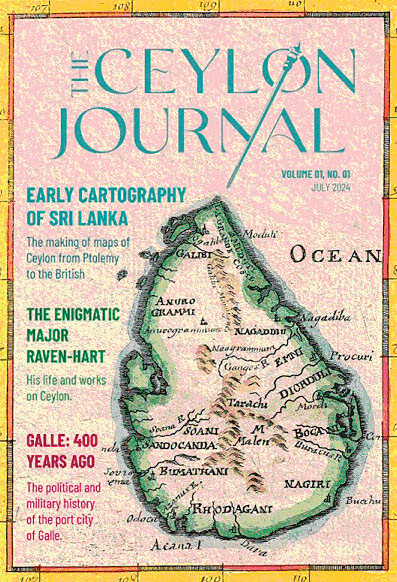 We often blame politicians for things that go wrong in our country and God knows they are responsible for most of it. But unfortunately for us, the first six years of independence, from 1948 to 1954, were really unlucky years for Sri Lanka. As if successive failed monsoons and falling rice crops weren’t bad enough, along came the Korean war. In the meantime, the Sri Lankan people had got used to the idea of food rations during the war and they wanted rations to be continued as free handouts. Those demands climaxed in the ‘Hartal’ of 1953, a general strike demanding something for nothing. Politicians were being forced to keep the promises they had made when before independence, that they would deliver greater prosperity than under the British.
We often blame politicians for things that go wrong in our country and God knows they are responsible for most of it. But unfortunately for us, the first six years of independence, from 1948 to 1954, were really unlucky years for Sri Lanka. As if successive failed monsoons and falling rice crops weren’t bad enough, along came the Korean war. In the meantime, the Sri Lankan people had got used to the idea of food rations during the war and they wanted rations to be continued as free handouts. Those demands climaxed in the ‘Hartal’ of 1953, a general strike demanding something for nothing. Politicians were being forced to keep the promises they had made when before independence, that they would deliver greater prosperity than under the British.
So, by 1949, D. S. Senanayake was forced to devalue the rupee, leading to rapid price inflation. Thankfully we didn’t have significant foreign debt then, or we might have had to declare insolvency much earlier than we finally did, in 2022. And then, because of failing paddy harvests, we were forced to buy rice
from China, which was in turn buying our rubber. But as luck would have it, China entered the Korean war, causing the UN, at the behest of the US, to embargo rubber exports to China.
This placed the D. S. Senanayake and John Kotelawala governments in an impossible predicament. There was a rice shortage; people were demanding free rice, and without rubber exports, there was no foreign exchange with which to buy rice. Kotelawala flew to Washington, D.C., to meet with President Eisenhower and plead for either an exemption from the embargo or else, for the US to buy our rubber. Despite Sri Lanka having provided rubber to the Allies at concessionary prices during the war and having supported the Allies, Eisenhower refused. British and American memories were short indeed. In India, Mahatma Gandhi and the Congress Party had chosen the moment, in August 1942 when Japan invaded Southeast Asia and were poised to invade Bengal, to demand that the British quit India, threatening in the alternative that they would throw their lot in with the Japanese. The Sri Lankan government, by contrast, had stood solidly by the Allies. But now, those same allies stabbed the fledgling nation in the chest. Gratitude, it seemed, was a concept alien to the West.
In these circumstances, Sri Lanka had no choice but to break the UN embargo and enter into a rice-for-rubber barter agreement with China. This resulted not only in the US suspending aid and the supply of agricultural chemicals to Sri Lanka, but also invoking the Battle Act and placing restrictions on US and UK ships calling at the island’s ports.
Understandably, by 1948, Sri Lankans entertained a strong disdain for colonialism. With the Cold War now under way, the USSR and China did all they could to split countries like Sri Lana away not just from their erstwhile colonial masters but also the capitalist system. If any doubt persisted in the minds of Sri Lankan politicians, Western sanctions put an end to that. The country fell into the warm embrace of the communist powers. China and the USSR were quick to fill the void left by the West, and especially in the 1950s, there was good reason to believe that the communist system was working. The Soviet economy was seeing unprecedented growth, and that decade saw them producing hydrogen bombs and putting the first satellite, dog and man in space.
As a consequence of the West’s perfidy in the early 1950s, ‘Capitalism’ continues to have pejorative connotations in Sri Lanka to this day. And it resulted in us becoming more insular, more inward looking, and anxious to assert our nationalism even when it cost us dearly.
Soon, we abolished the use of English, and we nationalized Western oil companies and the plantations. None of these things did us the slightest bit of good. We even changed the name of the country in English from Ceylon to Sri Lanka. Most countries in the world have an international name in addition to the name they call themselves. Sri Lanka had been ‘Lanka’ in Sinhala throughout the colonial period, even as its name had been Ceylon in English. The Japanese don’t call themselves Japan in their own language, neither do the Germans call themselves Germany. These are international names for Nihon and Deutschland, just like Baharat or Hindustan is what Indians call India. But we insisted that little Sri Lanka will assert itself and insist what the world would call us, the classic symptom of a massive inferiority complex. While countries like Singapore built on the brand value of their colonial names, we erased ours from the books. Now, no one knows where Ceylon tea or Ceylon cinnamon comes from.
Singapore is itself a British name: it should be Sinha Pura, the Lion City, a Sanskrit name. But Singapore values its bottom line more than its commitment to terminological exactitude. Even the name of its first British governor, Sir Stamford Raffles, has become a valued national brand. But here in Sri Lanka, rather than build on our colonial heritage, not the least liberal values the British engendered in us, together with democracy and a moderately regulated economy, we have chosen to deny it and seek to expunge it from our memory. We rejected the good values of the West along with the bad: like courtesy, queuing, and the idea that corruption is wrong.
We have stopped fighting for the dignity of our land, and I hope that as you read the articles in The Ceylon Journal that are published in the future, we will be reminded time and time again of the beautiful heritage of our country and how we can once again find it in ourselves to be proud of this wonderful land.
-

 Business6 days ago
Business6 days agoColombo Coffee wins coveted management awards
-

 News1 day ago
News1 day agoSuspect injured in police shooting hospitalised
-

 Features2 days ago
Features2 days agoRobbers and Wreckers
-

 Features4 days ago
Features4 days agoSri Lanka’s Foreign Policy amid Geopolitical Transformations: 1990-2024 – Part III
-

 Midweek Review4 days ago
Midweek Review4 days agoInequality is killing the Middle Class
-

 Features6 days ago
Features6 days agoSri Lanka’s Foreign Policy amid Geopolitical Transformations: 1990-2024 – Part I
-

 Business1 day ago
Business1 day agoSanjiv Hulugalle appointed CEO and General Manager of Cinnamon Life at City of Dreams Sri Lanka
-

 Features5 days ago
Features5 days agoA brighter future …



